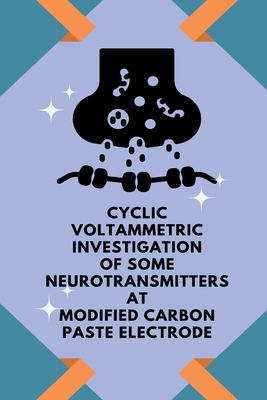You are here
Back to topCyclic voltammetric investigation of some neurotransmitters at modified carbon paste electrode (Paperback)
Email or call for price.
Description
The fundamental process in electrochemical reactions is the transfer of electrons between the electrode surface and molecules in the interfacial region either in solution or immobilized at the electrode surface. The kinetics of this heterogeneous process can be significantly affected by the microstructure and roughness of the electrode surface, the blocking of active sites on the electrode surface by adsorbed materials, and the nature of the functional groups (e.g., oxides) present on the electrode surface 1, 2]. Hence chemically modified electrodes (CMEs) have evolved as a recently emerging field and much study of interest have been shown by many researchers in this field. In detail, the chemically modified electrodes comprise an approach to electrode system design that finds the use in a wide spectrum of basic electrochemical investigations, including the relationship of heterogeneous electron transfer and chemical reactivity of electrode surface chemistry, electrostatic phenomena at electrode surface, and electron as well as ionic transport phenomena in polymers, and the design of electrochemical devices and systems for applications in chemical sensing, energy conversion and storage, molecular electronics, electrochromic displays and electro-organic synthesis. The applicability of these CMEs is wide-ranging, but one important application is biomolecule sensing.
There has been an increasing interest in the creation of modified electrode surfaces that differ from the corresponding bare surfaces and produce an electrode surface that generates reproducible result, which has a vast application in biological and chemical sensing. The focus of the work covered in this thesis is to controllably alter the properties of carbon surfaces, so that the surfaces can be used for desired sensor applications. Carbon was the chosen surface, as it is highly conducting with a wide potential window, structurally stable, relatively inexpensive and stable layers of modifiers can attach to the surface in a controllable manner. There are many different forms of conducting carbon materials including glassy carbon (GC), highly oriented pyrolytic graphite (HOPG), pyrolysed photoresist film, (PPF), carbon nanotubes, carbon powder, screen printed carbon, carbon fibres, carbon nanocapsules, Fullerene and carbon composites 3].

